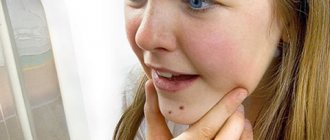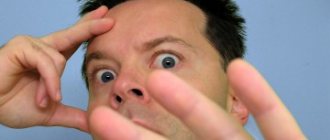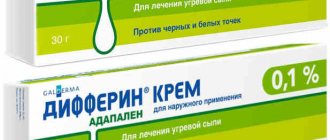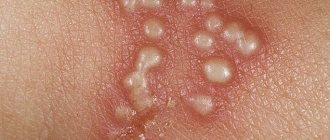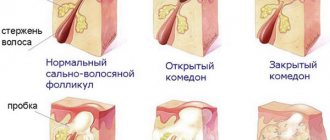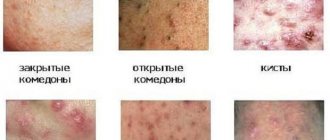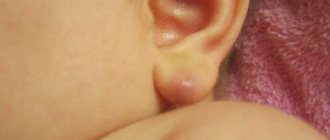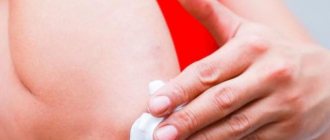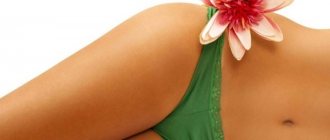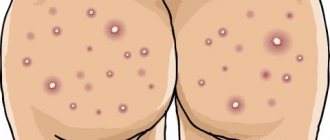Many people are very familiar with the problem of acne: according to doctors, such rashes are observed in 85% of adolescents over the age of 12. Moreover, up to the age of 25, this is unpleasant, but in most cases it only indicates an unstable hormonal background. However, a purulent pimple on the chest can not only ruin your mood. It is also dangerous due to the risk of infection.
If the rash appears close to the nipple, there is a chance that the infection will get inside the mammary glands, into the lymphatic system. This danger most threatens people with weakened immune systems. And contrary to stereotypes, the risk exists not only for women, but also for men. After all, guys also have mammary glands, although in an underdeveloped state.
Why do acne appear on the chest?
In women, acne on the chest is 3 times more common than in men. The formation of inflammatory elements is caused by the action of three main factors:
- excessive sebum secretion;
- thickening of the stratum corneum of the hair follicles due to the slow exfoliation of dead cells (follicular hyperkeratosis);
- proliferation of propionic acne bacteria in the skin pores.
A pimple on the chest occurs under the influence of external and internal causes. In 83% of cases, deterioration in the condition of the skin indicates malfunctions in the functioning of vital organs and systems - endocrine, reproductive, nervous, digestive, etc.
Insufficient hygiene standards
Inadequate skin care is one of the key causes of acne. Acne under the breasts occurs due to clogging of pores with sweat and sebaceous secretions. Infrequent showering provokes the proliferation of pathogenic microbes in the sebaceous glands, which causes purulent inflammation. Provoking factors include:
- infrequent showering (less than 2 times a day);
- rare use of washcloths;
- insufficient skin hydration;
- use of low-quality hygiene cosmetics.
Dermatologists do not recommend using shower gels and shampoos with parabens. Esters only irritate the skin, causing excess sebum secretion and the formation of acne.
Avitaminosis
Chest acne in men is often caused by vitamin deficiency.
The highest needs for vitamins are among adolescents, pregnant and lactating women, and people engaged in strenuous work.
A deficiency of nutrients in the body leads to:
- disruption of skin barrier function;
- increased secretory activity of the sebaceous glands;
- decreased local immunity;
- reproduction of opportunistic bacteria in the follicles.
Acne on the chest is a consequence of a lack of retinol (vitamin A), ascorbic acid (vitamin C), folacin (vitamin B9), tocopherol (vitamin E), etc. Acne is also caused by a deficiency of manganese, zinc, selenium and calcium.
Allergic or contact dermatitis
Autoimmune disorders in the body are often accompanied by an allergic rash on the face. Acne is one of the symptoms of contact dermatitis, which occurs when the epidermis is exposed to irritating substances:
- allergenic cosmetics;
- nickel jewelry;
- insect bites;
- chemical reagents, etc.
Acute dermatitis is accompanied by red dots on the chest, which turn into bubbles with transparent contents. After a decrease in immunity, infection penetrates into them, which causes purulent inflammation and acne.
Eczema or neurodermatitis
If your breasts are pimpled and your skin itches or peels, this indicates atopic dermatitis. A sluggish allergic disease is accompanied by peeling and weeping rashes on the body. Acne occurs against the background of autoimmune disorders. Neurodermatitis is more common in people with an unstable nervous system. Disease provocateurs include:
- helminthiasis;
- diabetes;
- thyroid dysfunction;
- malfunctions of the digestive system.
Sometimes acne on the chest is a manifestation of eczema. It is accompanied by redness, moderate swelling, and itching. Caused by external and internal factors - pathologies of the endocrine system, liver diseases, exposure to chemicals.
Infectious diseases
If a red or purulent pimple on the chest is accompanied by fever, body aches, and headache, this indicates an infectious disease:
- measles is a viral disease that is accompanied by red spots on the chest, conjunctivitis, high fever, and lacrimation;
- pyoderma is a bacterial infection that provokes purulent inflammation of the skin;
- chicken pox is a viral disease in which blisters with cloudy contents appear on the chest, face and limbs.
In case of infectious inflammation, you should consult a doctor. Ignoring diseases is fraught with complications - furunculosis, inflammation of the sweat glands.
Hormonal disorders
Fluctuations in steroid hormones in the blood are the most common cause of acne. Increasing levels of estrogen and testosterone in the body leads to increased production of natural fat. This is due to the presence of androgen-sensitive receptors in the skin.
Hormonal causes of chest acne in women:
- puberty;
- pregnancy and lactation;
- premenstrual syndrome;
- abortion or spontaneous miscarriage;
- menopause.
In men, acne on the chest occurs mainly during adolescence, as well as with excessive production of androgens.
Diseases of internal organs
The skin is susceptible to changes that occur inside the body. Gynecological problems, diseases of the gastrointestinal tract and endocrine glands affect the secretion of sebum and immunity.
Self-diagnosis, just like self-medication, is dangerous to your health.
Dermatologists include the following as provocateurs of acne:
- intestinal dysbiosis;
- gastritis;
- polycystic disease and ovarian depletion syndrome;
- liver failure;
- hypothyroidism;
- frequent constipation.
White pimples in the chest area occur in 50% of patients suffering from gastritis, duodenitis and other intestinal pathologies.
Other reasons
Acne is a disease that has many causes. Causes of acne on the chest include:
- work in hazardous production;
- severe stress;
- poor nutrition;
- abuse of birth control pills;
- use of perfumes;
- humid climate;
- wearing synthetic clothing;
- excessive cleanliness.
Acne after lactation has the same causes as during pregnancy. Hormonal imbalance affects the functioning of the sebaceous glands, due to which the skin pores become clogged with oil, become inflamed and cause acne.
Heat, friction and sweat can trigger certain types of acne
Friction or pressure on the skin, plus steam or sweat, and we get an irritated and inflamed follicle, and then mechanical acne. Reasons include tight-fitting clothing, narrow collars, backpacks, bag straps and sportswear or equipment.
READ ALSO: Pimples on the forehead causes, fight, prevention
Sweat can also trigger acne. To minimize irritation, shower immediately after exercise or work. Do not use aggressive hygiene products: gels, shower soaps with fragrances, mineral oil, synthetic components. Acne can occur from body creams that contain many comedogenic ingredients (for example, coconut oil). There is no acne on other parts of the body because there are fewer sebaceous glands there and therefore less prone to acne formation. In addition, acne can appear from hair products: balms, leave-in care and styling. So cleanse your skin gently and use body products with salicylic acid or benzoyl peroxide.
Who will help cure the problem
To identify the factors that provoked acne on the chest, you should consult a dermatologist. The doctor will prescribe the following examinations:
- clinical blood test;
- coprogram;
- general urine analysis;
- Ultrasound of the pelvic organs;
- blood test for hormones;
- tests for demodicosis and allergic dermatosis.
If immune, gastroenterological and gynecological problems are detected, you will need to consult doctors of other specializations - endocrinologist, immunologist, gastroenterologist, gynecologist, etc.
How to remove acne from chest
Complex therapy eliminates acne on the sternum by restoring the functioning of internal organs and normalizing sebum secretion. To combat acne the following are used:
- diet therapy – improves metabolism in soft tissues, restores exfoliation of epidermal cells, increases local immunity;
- pharmacotherapy – aimed at eliminating infection in inflammatory foci and regenerating the skin;
- physiotherapy – improves the regenerative properties of the skin, relieves inflammation.
Particular importance is given to the sanitary and hygienic regime. The state of the microflora, the correct functioning of the sebaceous glands, and the likelihood of bacteria multiplying inside the follicles depend on proper body care.
Hygiene and nutritional habits
Skin care procedures are aimed at cleansing pores of sebaceous plugs, improving gas exchange in tissues, and restoring the barrier function of the epidermis. To get rid of acne on the chest, you need to:
- take a shower or bath twice a day;
- Wash with a washcloth once every 2-3 days;
- use hypoallergenic gels and shampoos;
- moisturize the décolleté area with creams with a light texture.
In the fight against acne, you need to stick to a diet and reduce the amount of carbohydrates in your diet.
The skin will clear up faster if you not only change your diet, but also use lotions and creams to locally combat pimples.
Dermatologists advise including the following food products in the menu:
- muesli;
- spinach;
- cucumbers;
- broccoli;
- wheat bran;
- raisin;
- offal;
- rose hip;
- beans;
- currant;
- raspberries;
- celery.
To prevent acne from getting worse, you need to give up sugar, fatty foods, confectionery, carbonated drinks and fast food.
Medications
To remove small pimples on the body, use anti-acne ointments and gels:
- Adapalene – improves exfoliation of dead cells, relieves inflammation;
- Clindamycin – destroys pathogens of purulent inflammation of the skin, stimulates tissue healing;
- Isotretinoin – reduces the activity of the sebaceous glands, prevents the formation of plugs in the pores;
- Deriva S – destroys bacterial flora, heals acne on the chest.
If local therapy is ineffective, systemic antibiotics from the group of tetracyclines and macrolides are used - Minocycline, Tetracycline, Erythromycin, etc.
Physiotherapy
Pimples in the décolleté area are more common in people with oily skin. To normalize sebum production, reduce inflammation and increase local immunity, physiotherapeutic procedures are used:
- iontophoresis with salicylic acid – improves exfoliation of dead cells;
- infrared laser therapy – eliminates inflammation, dries out acne;
- vacuum cleansing – removes open comedones from the skin surface;
- microcurrent therapy – increases skin tone and immunity;
- galvanization – reduces sebum production.
To achieve the best effect, 3 to 8 physiotherapy sessions are performed.
Traditional methods
Acne can be treated well with folk remedies. To improve the condition of the skin, use:
- Tincture of calendula. 2 tbsp. l. the herbs are poured into 500 ml of vodka and infused for at least 2 weeks in a cool place. Mix with boiled water in a 1:1 ratio and use 2-3 times a day as a cleansing tonic.
- Salicylic alcohol. 1 tsp. solution is added to 2 tbsp. l. baby cream Apply to problem areas after a shower 2 times a day.
- Clay. In 1 tbsp. l. blue cosmetic clay add a little boiled or mineral water. The pasty mass is applied to the chest once a day for 2 weeks.
To make pimples dry out faster, you need to treat them with Zinc-salicylic ointment before going to bed.
Skin condition and nutrition
The first thing you should do is analyze your diet. Make a list of what you eat, where and in what quantity. This way you can clearly see what you are eating. Then make a list of foods that should be in your diet. Increase the amount of vegetables and fruits. To avoid intestinal problems, you need to consume fiber. It is better if the vegetables are steamed. Eliminate spicy, salty and fried foods from your diet; these foods are bad for the liver and can cause digestive problems. Food should be light and tasty.
Make it a habit to drink green tea instead of coffee and eat dried fruits and nuts instead of buns and sweets. A small piece of chocolate is all you can afford. Don't let this make you sad. Believe me, your beauty and health are worth some sacrifices. In addition, raisins, dried apricots, figs and dates are very tasty.
Give up chips and fast food for the sake of your skin. Your food should be varied and tasty. Learn to cook and treat yourself to small masterpieces of your culinary art.
A prerequisite for solving skin problems is drinking clean water. By drinking 8 glasses a day, you will normalize your digestive system and notice a significant improvement in your skin condition.
If you have a tendency to allergic reactions, then you need to exclude unwanted foods. To relieve symptoms, use antiallergic medications prescribed by your doctor.
You can take a course of vitamins specifically designed to improve the condition of your skin, hair and nails. You can purchase them at the pharmacy.
Proper nutrition is the best remedy. By changing your diet, you will change your life. Let her be beautiful.
What not to do
In the fight against acne, many make mistakes that only worsen the condition of the skin:
- squeeze out pimples;
- treated with warming ointments;
- apply mustard plasters;
- mask acne with decorative cosmetics;
- visit solariums and baths.
Dermatologists categorically do not recommend resorting to heat treatment and squeezing out pimples. Such actions only increase inflammation, which can lead to the formation of boils and carbuncles on the chest.
Why is a rash on the chest dangerous?
Acne is a consequence of bacterial infection multiplying in the skin pores.
Ignoring the problem can lead to the spread of rashes and abscesses. Over time this leads to:
- lymphadenitis;
- furunculosis;
- abscesses;
- tissue scarring.
After acne, pigment spots and scars remain on the chest. With numerous purulent pimples, strands of connective tissue (keloid scars) form in areas of inflammation. They do not resolve and require surgical treatment. Lymphadenitis against the background of acne in 1.5% of cases leads to systemic infection with a bacterial infection, that is, sepsis.
Prevention
Acne is a chronic disease that cannot be cured completely. But if preventive measures are taken, the likelihood of relapse is reduced significantly. To prevent chest rashes, you need to:
- eat a balanced diet;
- avoid stressful situations;
- strengthen immunity;
- wear clothes made from natural materials;
- take a shower twice a day;
- treat cuts and abrasions with antiseptics.
Acne is a secondary disease that occurs when the endocrine, reproductive, digestive, immune and other systems are disrupted. Timely treatment of current diseases prevents purulent rashes on the body.
Localization of acne, their features
As a rule, the places where acne is localized are:
- skin under the rib cage. Typically, elements of the rash appear under the breast due to insufficient hygiene;
- skin between the mammary glands. The reason lies in uncomfortable underwear that prevents moisture evaporation. To prevent the appearance of nodules in this area, it is necessary to wear underwear that allows the skin to breathe.
READ ALSO: Candidal urethritis: causes, symptoms, diagnosis, complications, treatment and prevention of the disease

